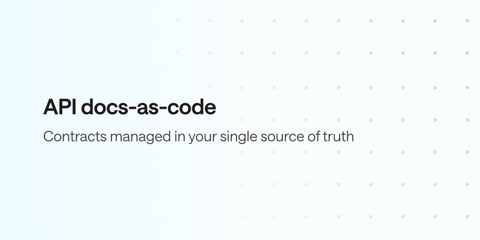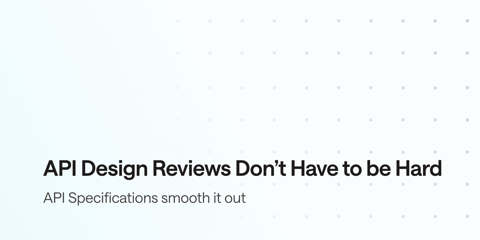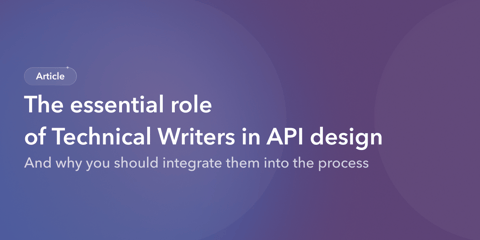API governance is critical for ensuring consistency, security, and quality in enterprise API programs. However, maintaining governance across a distributed organization can be challenging, especially as teams grow and APIs proliferate. In some cases, organizations opt to define guidelines rather than API governance in an attempt to reduce the work required day-to-day.
The OpenAPI Specification (OAS) provides a structured, machine-readable format for defining APIs. By leveraging OpenAPI, organizations can enhance their API governance efforts, streamline design reviews, automate compliance checks, and create a culture of continuous improvement. In this article, we will explore the differences between API governance and guidelines, the true purpose of API governance, and how OpenAPI can drive better API governance practices.
The Importance of API Governance
While terms like “guidelines” or “guardrails” may sound like a light touch approach to managing APIs, they often result in optional practices rather than consistent ones. When guidelines are implemented, they offer more generalized considerations rather than prescribed rules to which teams will be held accountable. Relying purely on guidelines leads to a lack of cohesion across teams, missed automation opportunities, and even riskier outcomes when policies are loosely interpreted or inconsistently followed.
API governance establishes rules and best practices for designing, building, and managing APIs within an organization. Effective governance ensures:
- Consistency: APIs follow a unified design language, improving usability.
- Security: Standardized authentication, authorization, and data handling policies.
- Scalability: APIs are built with future growth in mind, avoiding breaking changes.
- Developer Experience: Well-documented, predictable APIs accelerate adoption.
Traditional governance models often rely on manual reviews, which can be slow, subjective, and difficult to enforce across multiple teams. OpenAPI helps bridge this gap by providing a machine-readable framework for enforcing governance at scale.
Using OpenAPI to Drive API Design Reviews
OpenAPI serves as a single source of truth for API definitions. By leveraging OpenAPI during design reviews, organizations can:
- Use OpenAPI documents as descriptions of the API’s purpose, behavior, and schema definitions.
- Facilitate early discussions between API producers, consumers, and governance teams.
- Align APIs with enterprise standards before and during the development process.
- Simplify collaboration by providing a common language for stakeholders.
By making OpenAPI part of the design review process, teams can proactively address inconsistencies and security risks, preventing costly rework later in the API lifecycle.
Automating Checks with a Linter Workflow
Manual reviews can be time-consuming and prone to human error. Automating API governance using a linter workflow helps enforce standards at scale.
API linting is an automated process that checks an OpenAPI document against predefined rules, typically defined by an API style guide. These rules can enforce:
- Naming conventions (e.g., using
camelCaseorsnake_case). - Security requirements (e.g., enforcing authentication).
- Proper documentation (e.g., ensuring every endpoint has descriptions).
- Consistent response codes and error handling.
The use of a linter results in several benefits:
- Early Error Detection: Mistakes are caught before APIs reach production.
- Enforced Standards: Ensures APIs remain consistent across teams.
- Reduced Review Effort: Automates repetitive checks, freeing up governance teams for strategic tasks.
By implementing linting in a CI/CD pipeline, organizations can enforce API governance continuously, reducing the risk of poor design decisions slipping through.
Tools for OpenAPI Linting
Several tools support OpenAPI linting, including:
- Spectral – A powerful linter that can validate OpenAPI documents against custom rules.
- vacuum - A drop-in replacement for Spectral that focuses on high performance linting while leveraging investments in existing Spectral rule sets
- OpenAPI Validator – Ensures OpenAPI files are correctly formatted and adhere to best practices.
The Power of API Design Reviews
One of the most effective ways to improve API design is to collaborate on the design early and often. OpenAPI makes these discussions more productive by providing a tangible, structured representation of the API. By shifting feedback on API design to earlier in the delivery process, organizations can experience several benefits:
- Prevents poor design choices from being implemented by catching them early, when the cost of change is much lower.
- Aligns stakeholders (developers, architects, security teams, product managers) before coding begins to ensure that the right thing is being built.
- Encourages feedback from API consumers to ensure usability and alignment with their needs.
- Reduces technical debt and rework by resolving issues at the design stage.
Best Practices for API Discussions
- Design-First Approach: Define the OpenAPI spec before writing any code.
- Collaborative Reviews: Involve multiple stakeholders to get diverse perspectives.
- Use Mock Servers: Tools like Prism and Microcks.io can generate mock responses from an OpenAPI document, allowing teams to test API behavior before implementation.
- Version Control OpenAPI Documents: Treat API specifications like code, with version control and change tracking.
By fostering discussions early in the API lifecycle, teams can prevent inconsistencies and ensure APIs align with organizational goals.
Leveraging Design Reviews for Coaching and Improvement
API design reviews shouldn’t just be about enforcement—they should also be opportunities for education and growth. Governance teams can use OpenAPI-based design reviews to coach developers on best practices. This offers several advantages for organizational improvement, including:
- Provide Constructive Feedback: Explain the reasoning behind required changes instead of just enforcing rules.
- Use OpenAPI as a Teaching Tool: Show examples of well-designed APIs and how they adhere to standards.
- Encourage a Business-Focused API Design: Help teams understand the impact of API decisions on consumers and the business value produced.
By embedding coaching into API governance, organizations can cultivate a culture of continuous improvement and high-quality API design.
Conclusion
OpenAPI is a powerful tool for strengthening API governance by providing a structured format for defining APIs, enabling automated checks through linting workflows, facilitating productive design discussions, and turning governance into a coaching opportunity. By integrating OpenAPI into the API development lifecycle, organizations can enforce standards efficiently, reduce rework, and improve API quality. Combining automation with human collaboration ensures that governance is both scalable and effective, leading to better APIs and a more mature API program.


